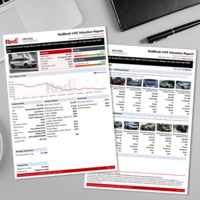The RedBook Insider: EV Price Movements & Future
With 2023 coming to a close, we’ve been reflecting on the positive territory that EV’s have made in a relatively short period. Since 2020, Battery Electric Vehicles (BEV) have grown from 0.8% share of the total vehicle market to being on track for 8-9% share by year end. Whilst Tesla holds the lions share, recent market entrant BYD and Volvo offshoot, Polestar, have gained a foothold quickly, with expectations for the former to rival and topple Tesla has the #1 EV brand in volume in 2024.
For some time now RedBook have split the Australian BEV market into distinct sub-segments; one being pragmatic-green and the other being premium-technology. The sub-segments were defined largely by price and equipment/performance attributes with pragmatic green featuring vehicles sub $65K (the likes of the BYD Atto & MG ZS) and the latter for vehicles positioned above (Tesla, Polestar, EV6, Ioniq5).
Since the start of 2023, there has been a distinct shift in market dynamics with the more premium-technology end of the BEV market losing significantly more value versus the pragmatic-green options.

So, what’s driving this downward trend for the upper end of the BEV market?
No doubt, it can be attributed to new market entrants that are lifting the standards and offerings in the pragmatic- green category, but also the impact of Government policy.
Off the back of the EV policy exempting Zero Low Emission Vehicles (ZLEV) under the green LCT threshold from Fringe Benefit Tax (FBT), we’ve witnessed an explosion in demand for cars that sit in that lower band. This policy has also sparked rapid repositioning of ZLEV ranges from OEMs to capitalize, with some brands down grading premium-technology offerings to fit under the magical $89,332 threshold. Whilst this is good news for new buyers, it has a detrimental effect on the superseded models, effectively prematurely depreciating them.
And, this is why, like many other learned colleagues in this space, there is strong advocacy for balanced government EV policy. Focusing solely on new EV adoption, leaves the used market devoid of the balanced support required to ensure that natural market forces don’t overcorrect. This current tidal wave of EV novated leases driven by FBT exemptions in particular has RedBook monitoring things very closely.
RedBook’s outlook for EV future values remains one of cautious optimism with clear distinctions in brands, models, and body types. As illustrated earlier, whilst Tesla is regarded as the industry benchmark, things can change quickly and thus require constant attention.
And none of the above, takes into account what a step-in battery technology could have on the current batch of EVs in 5 years’ time. The current generation of EV’S can achieve 300-500km mileage ranges. The next wave in battery tech is quoting double that mileage at a lower cost and weight.
Obsolescence is a far greater issue for EVs than ICE, and until such time there is visibility in used battery health, more transparency in replacement of individual battery cells to prolong a vehicles life, the uncertainty will remain.
Recent Posts
-
 The RedBook Insider: Emerging Divergence in the Popular 4x4 Ute Segment: Heavy-Duty Performance vs Hybrid-Electric Innovation30th September 2025
The RedBook Insider: Emerging Divergence in the Popular 4x4 Ute Segment: Heavy-Duty Performance vs Hybrid-Electric Innovation30th September 2025 -
 The RedBook Insider: Introducing RedBook LIVE: Smarter, Faster, and More Accurate Automotive Intelligence30th September 2025
The RedBook Insider: Introducing RedBook LIVE: Smarter, Faster, and More Accurate Automotive Intelligence30th September 2025 -
 The RedBook Insider: Introducing the RedBook Insider Webinar Series30th September 2025
The RedBook Insider: Introducing the RedBook Insider Webinar Series30th September 2025
